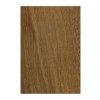Mangium - Acacia Mangium

Family: Fabaceae /
Mimosoidae - Order: Fabales - Class: Magnoliopsida
Scientific name: Acacia mangium
Trade name:: Wattle / Mangium
Also
known as Black wattle,
brown salwood, hickory wattle, mange, Australian teak
Origin:
Northeast Australia, New Guinea and Indonesia.
Instrumental
uses:
Guitar back and sides, Soundboards, fingerboards, bridges, head plates and
bindings.
Tonal
properties:
The taptone is very similar to
Acacia melanoxylon but with a slightly softer tone, and very loud sounding with
deep basses.
Produces a great Classical Guitar or Ukelele, it is very easy to work, turns and glues well, is able to
take a very high natural polish. After
finishing the instrument will be very beautiful: Yellowish-brown with
light/dark stripes and sometimes olive
green
stripes.
Is
a
moderately dense wood, depending on the place where it grows, with an average
dried weight nearly of 32 lbs/ft3 or
515 (kg/m3),
usually in Portugal it is more dense.
Acacia
mangium has very fast
growth and, mainly, being a nitrifying specie, due to the climatic diversity
in Portugal it can be found even on
the north of the country. Very
invasive species that presents an optimal growth from sea
level to 720 meters above sea level, with temperatures between 12 and 34 ° C,
rainfall from 1500 to 4500 mm / year,
so it can be found in various temperate and tropical zones of the globe, such as:
USA, Central
America, East Asia, Macau, Timor, Indian
Subcontinent, Southeast Asia, Indonesia, West Papua, Papua New
Guinea, Philippines; Vietnam, Australia,
Northern Territory; Australia, Queensland
and few more places with proper conditions to grow.
Is a tree up to 25 to 30m, higher than the Acacia melanoxylon (Australian Blackwood), has a straight shaft and
free of branches up to more than half of the total height, although outside its
natural range, it shows the tendency to produce more than one axis and to fork
at different heights.
The color of Acacia mangium is creamy coffee colour and the
heartwood is dark grey, brown, dark yellowish coffee and sometimes with olive-green
bands/stripes.
CITES status
is unrestricted.
Is not reported on the IUCN Red List.


